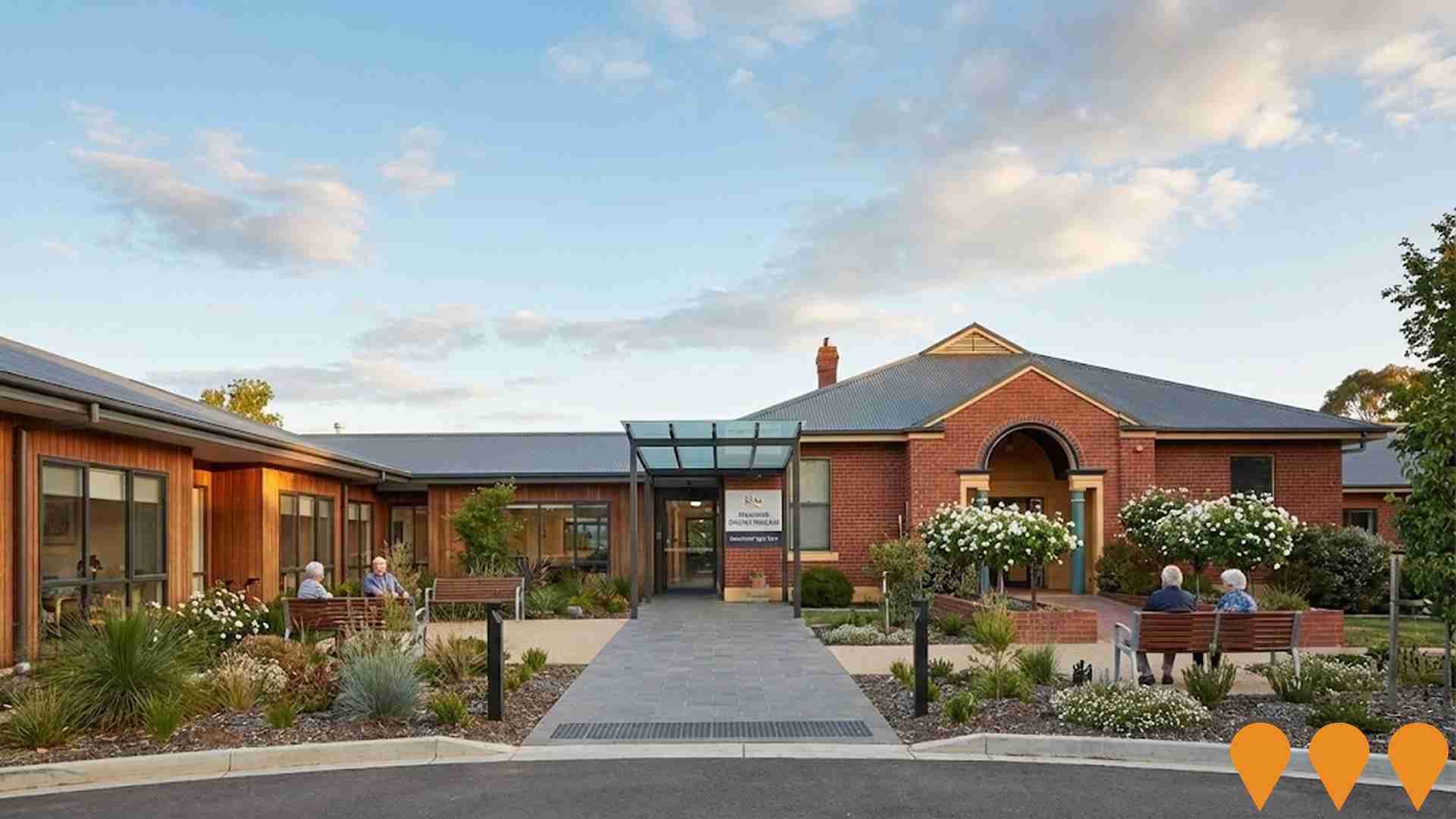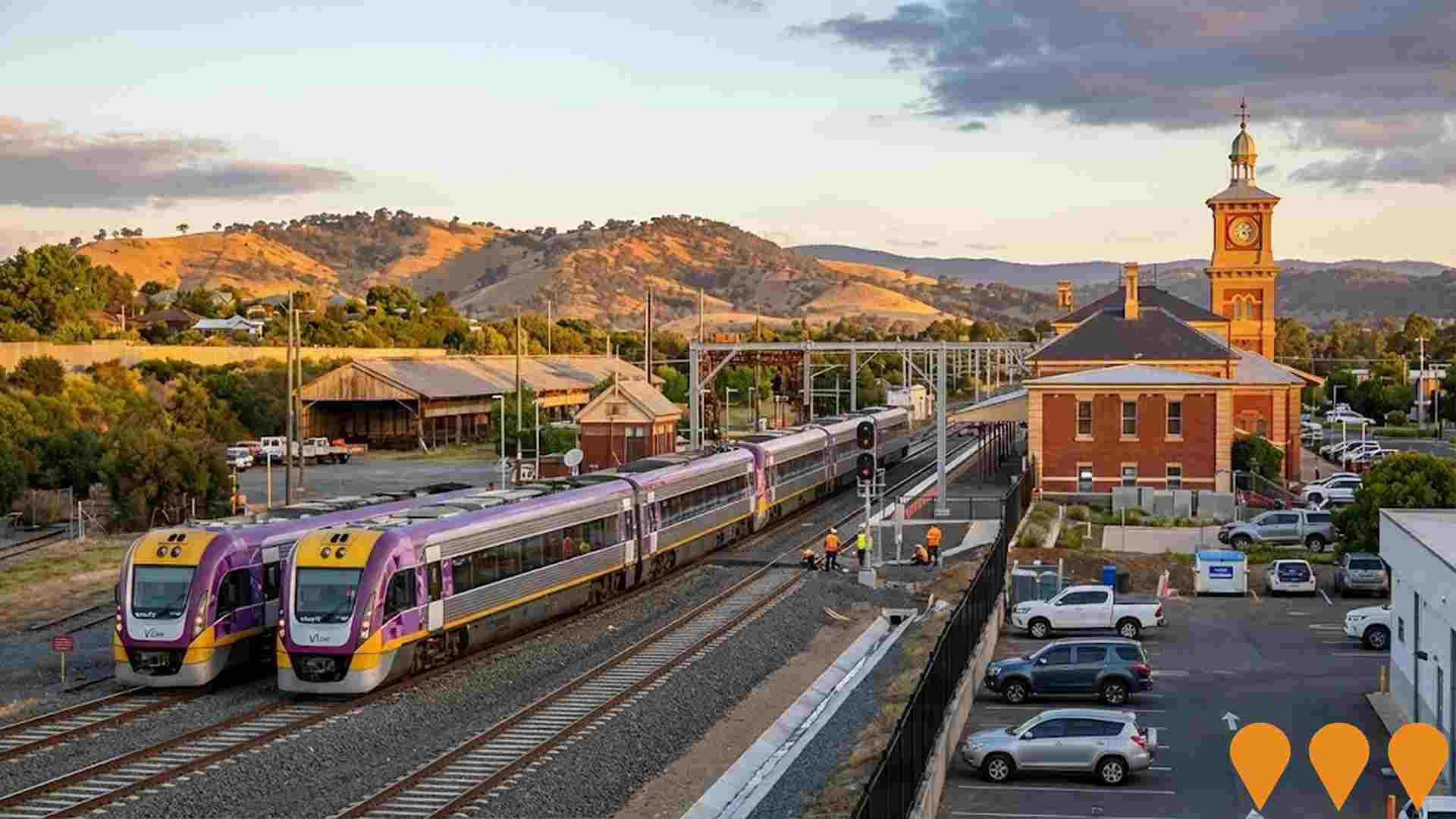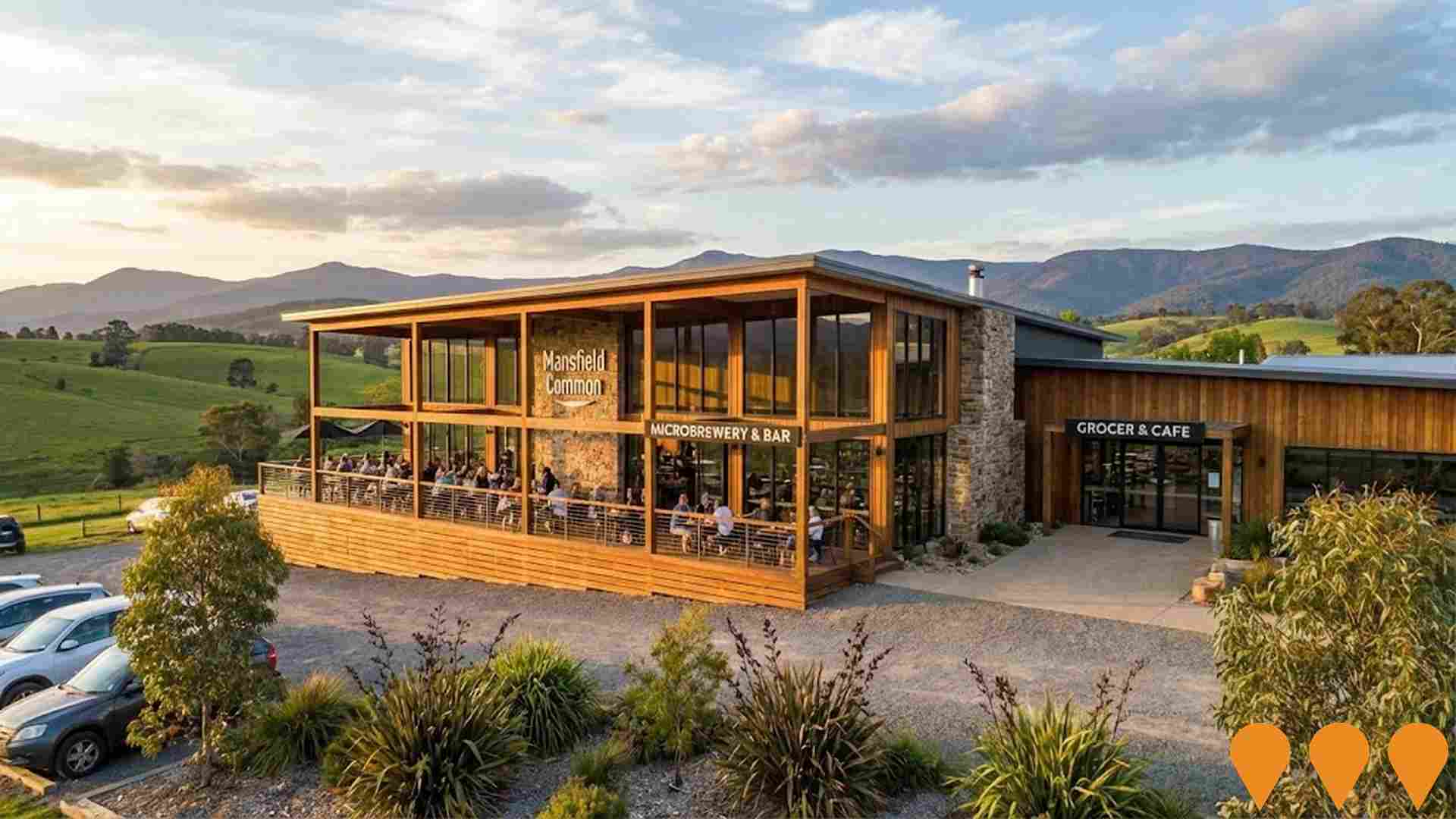Chart Color Schemes
est. as @ -- *
ABS ERP | -- people | --
2021 Census | -- people
Sales Activity
Curious about local property values? Filter the chart to assess the volume and appreciation (including resales) trends and regional comparisons, or scroll to the map below view this information at an individual property level.
Find a Recent Sale
Sales Detail
Population
Population growth drivers in Mansfield are strong compared to national averages based on AreaSearch's ranking of recent, and medium to long-term trends
Mansfield's population, as of August 2025, is approximately 12,010, reflecting a 14.2% increase since the 2021 Census which reported 10,517 people. This growth is inferred from ABS estimated resident population data of 11,162 as of June 2024 and an additional 153 validated new addresses since the Census date. The population density is around 3.1 persons per square kilometer. Mansfield's growth exceeded its SA4 region (4.7%) and non-metro area, making it a growth leader in the region. Interstate migration contributed approximately 65.2% of overall population gains recently. AreaSearch uses ABS/Geoscience Australia projections for each SA2 area released in 2024 with a base year of 2022.
For areas not covered, VIC State Government's Regional/LGA projections from 2023 are used, adjusted employing weighted aggregation methods to SA2 levels. Growth rates by age group are applied across all areas for years 2032 to 2041. By 2041, the population is projected to decline by 723 persons overall, with the 25 to 34 age group expected to increase by 182 people.
Frequently Asked Questions - Population
Development
The level of residential development activity in Mansfield was found to be higher than 90% of real estate markets across the country
Mansfield has received approximately 103 dwelling approvals annually over the past five financial years, totalling 518 homes. In FY26 so far, 25 approvals have been recorded. On average, each new dwelling brings in around 2.8 new residents per year, indicating strong demand and supporting property values. The average construction cost value of these dwellings is $637,000, suggesting a focus on premium properties.
This financial year has seen $27.1 million in commercial approvals, demonstrating moderate levels of commercial development. Compared to the rest of Victoria, Mansfield has slightly more development activity, with 18.0% above the regional average per person over the five-year period. This maintains good buyer choice while supporting existing property values.
However, construction activity has recently eased. The majority of new building activity consists of detached dwellings (95.0%), preserving the area's low-density nature and attracting space-seeking buyers. There are approximately 139 people per dwelling approval in Mansfield, indicating an expanding market. Despite stable or declining population forecasts, this may lessen housing pressure, creating favourable conditions for buyers.
Frequently Asked Questions - Development
Infrastructure
Mansfield has strong levels of nearby infrastructure activity, ranking in the top 40% nationally
Changes to local infrastructure significantly influence an area's performance. AreaSearch identified 14 projects likely impacting the area. Key projects include Mansfield District Hospital Residential Aged Care Development, Mansfield Common, Mansfield Station Precinct Activation Project, and Alpine Estate Mansfield. The following details projects likely most relevant.
Professional plan users can use the search below to filter and access additional projects.
INFRASTRUCTURE SEARCH
 Denotes AI-based impression for illustrative purposes only, not to be taken as definitive under any circumstances. Please follow links and conduct other investigations from the project's source for actual imagery. Developers and project owners wishing us to use original imagery please Contact Us and we will do so.
Denotes AI-based impression for illustrative purposes only, not to be taken as definitive under any circumstances. Please follow links and conduct other investigations from the project's source for actual imagery. Developers and project owners wishing us to use original imagery please Contact Us and we will do so.
Frequently Asked Questions - Infrastructure
Mansfield District Hospital Residential Aged Care Development
The Victorian Government is investing $62.87 million to redevelop the residential aged care facilities at Mansfield District Hospital. This includes building a new 30-bed facility to replace the ageing Buckland House, refurbishing the 42-bed Bindaree Retirement Centre, and refurbishing Buckland House for office spaces and activity rooms for community use. The new facility features single bedrooms with ensuites arranged in small households with kitchens and dining areas, dementia-friendly design, landscaped gardens, flexible shared spaces, and pandemic response features to support complex care needs and allow older Victorians to age in place.

North East Rail Line Upgrade
Major upgrade to the North East Rail Line between Melbourne and Albury-Wodonga, improving freight and passenger services, including track resurfacing, mud-hole removal, drainage improvements, bridge upgrades, and signalling enhancements to allow VLocity trains and better ride quality.

Mansfield Common
The two-story multi-use development will comprise a restaurant, bar and microbrewery/microdistillery with a cafe, providore, food grocer offerings, and a training facility for chefs, located at the foothills of the Victorian Alps approximately 180km from Melbourne.

Mansfield Station Precinct Activation Project
Council-led renewal of the historic Mansfield Station Precinct to create a community hub with an all-abilities playground, accessible changing facilities, a bicycle pump track, improved paths and parking, heritage museum upgrades and visitor facilities. Masterplan adopted in Oct 2023; total confirmed federal funding now $14.1m under the Regional Precincts and Partnerships Program.

Mt Buller Water Storage Project
100 megalitre off-stream storage (Boggy Creek Reservoir) providing potable water security for the village, enhancing firefighting capability, and supporting snowmaking. Designed with environmental offsets and completed mid-2020.

Alpine Estate Mansfield
A residential land estate in Mansfield, Victoria, offering 64 lots in the Victorian High Country. Set in the foothills of the Great Dividing Range, it provides a blend of natural beauty and modern conveniences, with proximity to parks, schools, cafes, transport, supermarkets, eateries, retail, and attractions like Mansfield Zoo, Mount Buller, and Mount Stirling. The estate spans 9.37 hectares with lot sizes ranging from 324m2 to 632m2.

Redgum Rise Residential Development
A residential subdivision offering 22 premium titled lots in a family-friendly area on the edge of Mansfield, adjoining Mansfield Botanical Gardens. Features elevated views, mostly flat parcels ranging from 564 to 866 sqm, sealed roads, concrete paths, and some blocks backing onto a landscaped reserve with established red gums. Lots are fully serviced and available for sale.

New Mountain Bike Trails
An ongoing project to expand the mountain bike trail network on Mt Buller, managed by the Mt Buller Resort Management.

Employment
AreaSearch assessment positions Mansfield ahead of most Australian regions for employment performance
Mansfield Vic. has a skilled workforce with diverse sector representation and an unemployment rate of 2.6%.
Over the past year, it maintained relative employment stability. As of June 2025, 5485 residents are employed, with an unemployment rate 1.2% lower than Rest of Vic.'s 3.8%, and workforce participation similar at 57.4%. Leading industries include construction, accommodation & food, and retail trade. Mansfield specialises in accommodation & food, with employment share 1.7 times the regional level, but has lower representation in health care & social assistance at 10.2% compared to the regional average of 16.8%.
Many residents commute elsewhere for work. Between June 2024 and June 2025, employment levels increased by 0.5%, labour force by 1.4%, causing unemployment rate to rise by 0.9 percentage points. This contrasts with Rest of Vic., where employment contracted by 0.9%, labour force fell by 0.4%, and unemployment rose by 0.4 percentage points. Jobs and Skills Australia's national employment forecasts from May 2025 project a 6.6% increase over five years and 13.7% over ten years, with varying growth rates between industries. Applying these projections to Mansfield's employment mix suggests local growth of approximately 6.0% over five years and 12.4% over ten years.
Frequently Asked Questions - Employment
Income
Income figures position the area below 75% of locations analysed nationally by AreaSearch
AreaSearch aggregated latest postcode level ATO data released for financial year 2022. Mansfield had a median income among taxpayers of $43,075 and an average level of $58,322. These figures were below the national average. They compared to levels of $48,741 (median) and $60,693 (average) across Rest of Vic. respectively. Based on Wage Price Index growth of 12.16% since financial year 2022, current estimates for Mansfield would be approximately $48,313 (median) and $65,414 (average) as of September 2025. According to 2021 Census figures, household, family and personal incomes in Mansfield ranked modestly, between the 22nd and 33rd percentiles. Distribution data showed that 30.2% of the population (3,627 individuals) fell within the $1,500 - $2,999 income range, similar to patterns seen in metropolitan regions where 30.3% occupied this range. Housing costs were modest with 87.2% of income retained. However, total disposable income ranked at just the 28th percentile nationally and the area's SEIFA income ranking placed it in the 5th decile.
Frequently Asked Questions - Income
Housing
Mansfield is characterized by a predominantly suburban housing profile, with above-average rates of outright home ownership
In Mansfield, according to the latest Census data, 95.0% of dwellings were houses with the remaining 5.1% being other types such as semi-detached homes, apartments, and 'other' dwellings. This is compared to Non-Metro Vic., where 93.6% of dwellings were houses and 6.4% were other types. Home ownership in Mansfield stood at 49.6%, with mortgaged dwellings making up 33.5% and rented dwellings 16.9%. The median monthly mortgage repayment was $1,500, aligning with Non-Metro Vic.'s average. However, the median weekly rent figure in Mansfield was $320, compared to Non-Metro Vic.'s $280. Nationally, Mansfield's mortgage repayments were significantly lower than the Australian average of $1,863, and rents were substantially below the national figure of $375.
Frequently Asked Questions - Housing
Household Composition
Mansfield has a typical household mix, with a fairly typical median household size
Family households constitute 68.0% of all households, including 23.2% couples with children, 36.6% couples without children, and 8.0% single parent families. Non-family households comprise the remaining 32.0%, with lone person households at 29.8% and group households making up 2.0%. The median household size is 2.3 people, which aligns with the average for the Rest of Vic.
Frequently Asked Questions - Households
Local Schools & Education
Mansfield performs slightly above the national average for education, showing competitive qualification levels and steady academic outcomes
The area's university qualification rate is 22.3%, significantly lower than Victoria's average of 33.4%. Bachelor degrees are most common at 15.1%, followed by postgraduate qualifications (3.9%) and graduate diplomas (3.3%). Vocational credentials are held by 41.7% of residents aged 15 and above, with advanced diplomas at 12.7% and certificates at 29.0%. Educational participation is high, with 29.1% currently enrolled in formal education: 10.7% in primary, 10.4% in secondary, and 2.1% in tertiary education.
Fourteen schools serve 1,423 students, with typical Australian school conditions (ICSEA: 1007). The educational mix includes five primary, four secondary, and five K-12 schools. Note: for schools with 'n/a' enrolments, please refer to the parent campus.
Frequently Asked Questions - Education
Schools Detail
Nearby Services & Amenities
Transport
Transport servicing is very low compared to other areas nationally based on assessment of service frequency, route connectivity and accessibility
Mansfield has 19 active public transport stops, all of which are bus stops. These stops are served by four different routes that together offer 40 weekly passenger trips. Transport accessibility is limited, with residents on average located 4210 meters from the nearest stop.
Service frequency averages five trips per day across all routes, resulting in approximately two weekly trips per individual stop.
Frequently Asked Questions - Transport
Transport Stops Detail
Health
Health performance in Mansfield is lower than average with common health conditions somewhat prevalent across both younger and older age cohorts
Mansfield faces significant health challenges with common health conditions prevalent among both younger and older age cohorts. The rate of private health cover is relatively low at approximately 49% of the total population (~5,872 people), compared to the national average of 55.3%.
The most common medical conditions in the area are arthritis and mental health issues, impacting 9.4% and 7.5% of residents respectively. 67.0% of residents declare themselves completely clear of medical ailments, compared to 63.0% across Rest of Vic. There are 25.2% of residents aged 65 and over (3,024 people). Health outcomes among seniors in Mansfield are above average, performing better than the general population in health metrics.
Frequently Asked Questions - Health
Cultural Diversity
Mansfield is considerably less culturally diverse than average when assessed alongside AreaSearch's national rankings for language and cultural background related metrics
Mansfield's population was found to have low cultural diversity, with 87.8% being Australian citizens and 87.5% born in Australia. The majority spoke English only at home, at 95.3%. Christianity was the predominant religion, with 44.0% of Mansfield residents identifying as Christian.
Notably, Judaism had a higher representation in Mansfield compared to the rest of Victoria, at 0.2% versus 0.1%. In terms of ancestry, English (31.8%), Australian (29.3%), and Irish (10.7%) were the top three groups represented. Some ethnic groups showed notable differences: Scottish was overrepresented at 9.8%, Dutch at 1.8%, and German at 4.0%.
Frequently Asked Questions - Diversity
Age
Mansfield hosts an older demographic, ranking in the top quartile nationwide
Mansfield's median age is 47 years, which is significantly higher than the Rest of Vic average of 43 and substantially exceeds the national average of 38 years. The age profile shows that those aged 65-74 are particularly prominent, comprising 15.0% of the population, while the 35-44 group makes up only 10.6%, which is smaller than in Rest of Vic. This concentration of 65-74 year-olds is well above the national average of 9.4%. Between 2021 and present, the 15 to 24 age group has grown from 9.2% to 11.5%, while the 25 to 34 cohort increased from 9.4% to 10.5%. Conversely, the 55 to 64 cohort has declined from 16.4% to 14.5%. By 2041, Mansfield's age composition is expected to shift notably. The 85+ group will grow by 36%, reaching 381 people from 279. This growth is primarily driven by the aging population dynamic, with those aged 65 and above comprising 70% of projected growth. Conversely, population declines are projected for the 35 to 44 and 45 to 54 cohorts.
